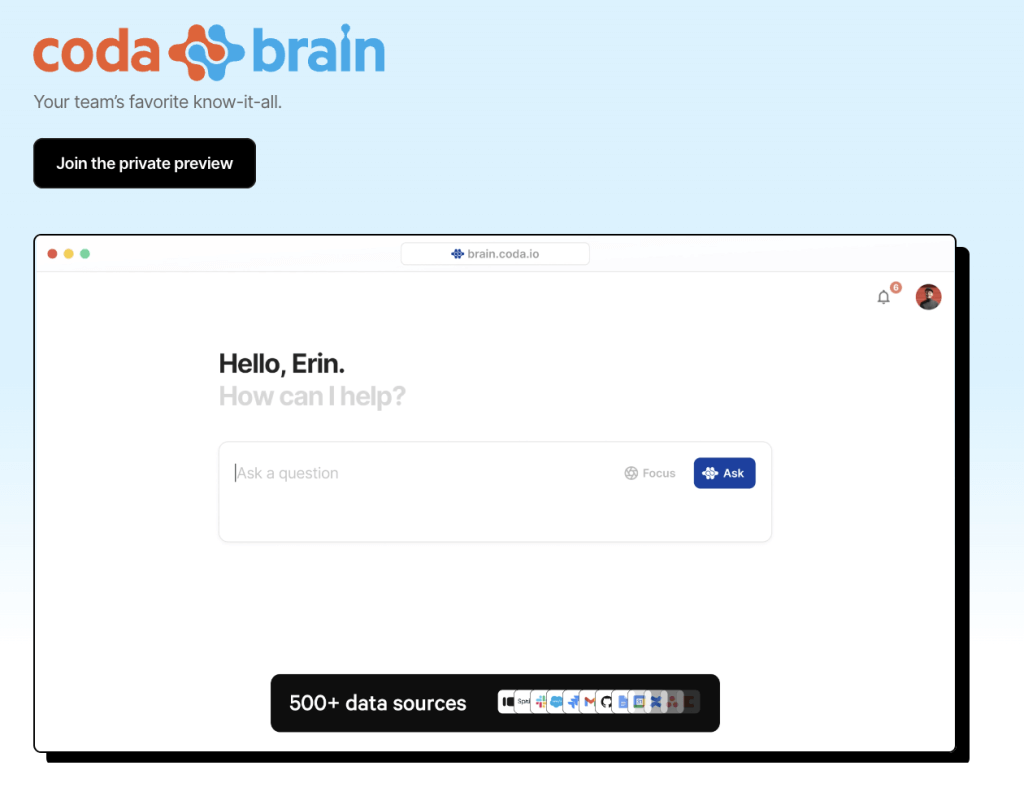In a significant move that signals a broader transformation in the AI productivity space, Grammarly’s acquisition of Coda marks a decisive shift from its roots as a writing assistance tool to its ambitions of becoming a comprehensive AI productivity platform. This strategic acquisition, paired with the appointment of Coda’s co-founder Shishir Mehrotra as CEO, positions Grammarly at the intersection of enterprise AI adoption and workplace productivity.
Strategic Implications of Grammarly’s Acquisition of Coda
Grammarly’s acquisition of Coda represents more than just a merger of complementary technologies. It’s a calculated move that addresses several strategic objectives:
Market Position Enhancement. Grammarly’s existing infrastructure, which serves 40 million daily users across 500,000 applications, combined with Coda’s sophisticated productivity suite, creates a formidable player in the enterprise AI space. This positions the company to compete more effectively against both established tech giants and emerging AI-focused startups, which I see as integral to the company’s success moving forward.
Enterprise Focus. The merger particularly strengthens Grammarly’s enterprise offerings — in myriad ways. Coda’s existing relationships with prominent companies like Robinhood, Merck, Pfizer, Accenture, Figma, the Department of Veterans Affairs, DoorDash, The New York Times, and numerous universities, complement Grammarly’s corporate client base, which includes, among others, Atlassian, Zoom, Siemens, Ford, Databricks, and Chevron. This expanded enterprise presence is crucial as organizations increasingly seek integrated AI solutions.
Technical Capability Expansion. Coda’s Brain technology, currently in private beta, can interface with over 800 enterprise applications, significantly enhances Grammarly’s technical capabilities.

This integration allows for more contextually aware AI assistance, moving beyond simple writing suggestions to comprehensive workplace productivity enhancement. Grammarly’s acquisition of Coda will expand its capabilities beyond writing and comms assistance to include broader workplace productivity tools. Through Coda Brain’s ability to gather and analyze data from various business systems like CRM platforms and email, Grammarly plans to develop new features that streamline work tasks. The company will also incorporate Coda Docs into its existing document platform, building upon its current suite of third-party integrations.
Market Timing and Industry Trends
Grammarly’s acquisition of comes at a pivotal moment in the AI industry. According to Deloitte’s projections, 25% of enterprises using generative AI are expected to deploy AI agents by 2025, growing to 50% by 2027. Capgemini’s survey further supports this trend, indicating that 82% of large enterprises plan to integrate AI agents within three years.
Grammarly’s 2024 State of Business Communication Report indicated that while knowledge workers spend ~88% of their work week communicating, only 5 in 10 use gen AI, compared to 9 in 10 of business leaders. Grammarly posits that reskilling and upskilling and closing that divide, and helping everyone across organizations more productive and more effective communicators could result in a savings of $1.6 trillion annually. That’s a value prop that’s hard to argue with.
Leadership Transition and Future Direction
The appointment of Shishir Mehrotra as CEO is also noteworthy. Mehotra’s track record at YouTube, where he served as Chief Product Officer and Chief Technology Officer, combined with his success in growing Coda, brings valuable experience in scaling technology platforms.
This leadership change suggests a more aggressive growth strategy, which I’m a fan of, and there’s every reason to expect it will eventually lead to a public offering. Coda hit $41.1 million in sales in 2024 and boasts 10,000 customers. That, combined with the company’s robust maker and developer community should also bode well for Grammarly moving forward. Grammarly is in use across 96% of the Fortune 500 and ranks seventh on the Forbes Cloud 100 list. The company is valued at $13 billion and Mehtrota acknowledged the opportunity here is clear: two innovative companies combining strengths to more fully serve enterprise customers and grow faster together.
Challenges and Opportunities
While the merger presents significant opportunities, several challenges lie ahead:
- Integration Complexity. Merging Coda’s flexible productivity suite with Grammarly’s enterprise grade AI infrastructure while maintaining service quality for existing customers will be crucial.
- Market Competition. The AI productivity space is increasingly crowded and becoming more so all the time. Both startups and tech giants the likes of Webex, Microsoft, Zoom, Zoho, Apple and others, are focused on the productivity space, and with good reason: it’s exactly what customers are looking for.
- Enterprise Adoption. The obvious one here is that success will depend on effectively convincing more enterprises to adopt this expanded platform amid numerous competing solutions. With both companies boasting significant and impressive enterprise user bases, combining their strengths should prove fruitful on this front.
Challenges aside, Grammarly’s acquisition of Coda will expand its capabilities beyond writing and corporate comms assistance to include broader workplace productivity tools. Through Coda Brain’s ability to gather and analyze data from various business systems like CRM platforms and email, Grammarly plans to develop new features that streamline work tasks. The company will also incorporate Coda Docs into its existing document platform, building upon its current suite of third-party integrations.
Grammarly has made impressive strides over the course of the last year alone, especially in the enterprise sector. Grammarly launched its Strategic Suggestions in March of this year, effectively giving notice that the company is infinitely more than a grammar checker. Strategic Suggestions is one of my favorite writing tools, watching over my shoulder whether I’m writing an article, a brief, a text message, or a social media post, helping me write more clear, succinct messages, and adjust tone as needed.
In October of this year, Grammarly launched new ROI Tools designed to address a common enterprise pain point: the struggle to define and measure the exact impacts of an organization’s AI efforts. Grammarly’s Effective Communication Score and the ROI Report are what enterprise customers need: metrics that definitively connect AI-powered comms improvements to business outcomes.
Looking Ahead
The combined entities’ vision of redefining productivity for the AI era is ambitious and well-timed. With Grammarly’s AI expertise, well-known brand and reputation, commitment to security, and data privacy, and Coda’s productivity tools and industry reputation, the company is nicely positioned to capitalize on the growing enterprise demand for AI-powered productivity solutions.
As mentioned, the success of this merger will likely depend on three key factors: seamless integration of both companies’ technologies, the ability to expand and grow market share, and the ability to continue to innovate at a rapid pace in this rapidly evolving AI landscape.
For the broader tech industry, this acquisition represents a significant consolidation in the AI productivity space and could trigger similar strategic moves among competitors. It also signals a larger trend of AI-focused companies expanding beyond their initial niches to build more comprehensive enterprise solutions. I’m looking forward to watching the progress and inroads in the enterprise AI market that Mehrotra and the Grammarly/Coda team are able to make in the coming months.
See related coverage here:
Grammarly’s New ROI Tools: A Game-Changer for AI Measurement in Enterprise Communication
Grammarly’s Enterprise Features Make Deploying Gen AI Secure, Easy, and a No-Brainer
AI Literacy: The New Competitive Advantage for Organizations of All Sizes
Grammarly’s Strategic Suggestions Launch Signals the Company is Far More than an Editing Solution



